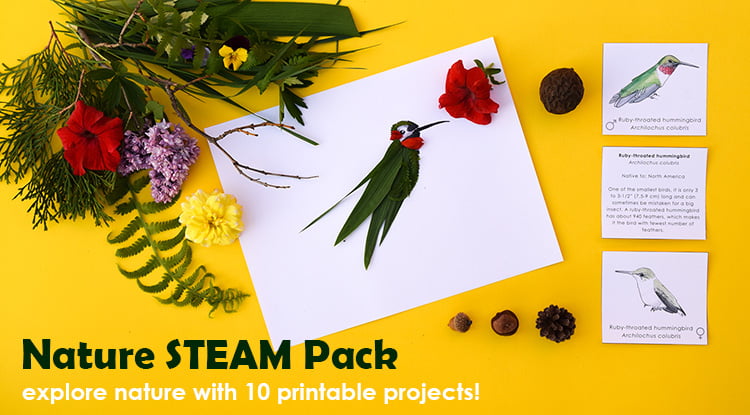Math in Nature scavenger hunt for kids sends the players on an outdoor chase for nature treasures. While looking for items to check off their lists, the players learn interesting facts about nature, while practising basic math.

In a scavenger hunt game, each player (or a team of players) gets a list of items that they need to find. The winner is either the one who finds all the items fastest or the one who finds the most items in a limited period of time. The game gives a boost to observational skills, and since many scavenger hunts are held outdoors, provides a great incentive to get out and about.
In addition to that, Math in Nature scavenger hunt presents two educational aspects. As per its name, players get to practice their knowledge of math and nature.
How does it work?
While going through the list, players learn a few basic facts about nature. For instance, what kind of animal has zero legs? (Slugs, worms, snails, and snakes all have no legs. Slugs and snails are supposed to have a foot though.) At the same time, players do some elementary math. Counting the legs of all the animals they see and figuring out how many legs most of the nearby animals have. (By the way, even if it doesn’t seem like it, most of the animals around have six legs. Insects are the most diverse and numerous group of animals on Earth.)
Math in Nature Scavenger Hunt Features
There are four scavenger hunt lists:
1 — General nature math scavenger hunt (basic observation of nature—counting)
2 — How many legs? (the number of legs that different animals have—counting and statistics)
3 — How many petals? (the number of petals that different flowers have—counting and statistics)
4 — What shape of leaf? (variation in leaf shapes and how they correspond with geometrical shapes)

All lists are illustrated with sepia ink drawings that kids can colour!
How to Use Math in Nature Scavenger Hunt Lists
Two of the nature scavenger hunt lists inspire players to walk around and try to find each of every kind of items. This leaf shape scavenger hunt is one of them.

The other two work on a statistical analysis of the surrounding as well. Players are supposed to find not just one item, but as many as they can, and figure out what it is the most frequent combination. Using the flower petal scavenger hunt from below, we figured that most flowers in our yard have more than five petals. Only one had three petals, and we didn’t find any two-petal flowers.

You can buy the full pack of four scavenger hunts or get one to try for free.
Get the Full Pack!
or
Download the Sample for Free!
You can also purchase it as a part of our Nature STEAM bundle along with other nature-inspired printable projects.










Comment VERY NICE. I LOVE IT*